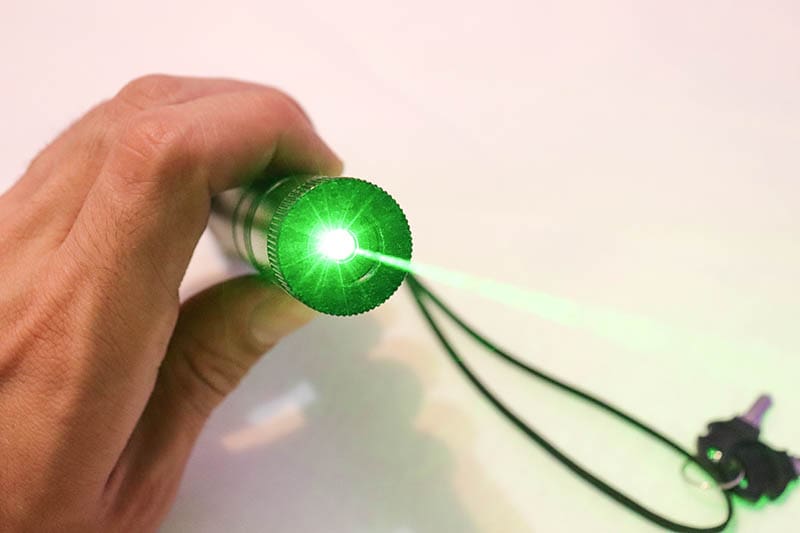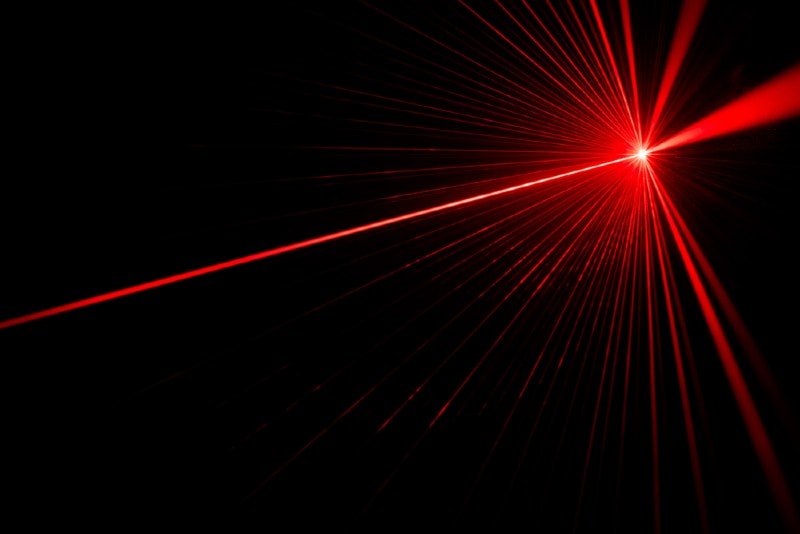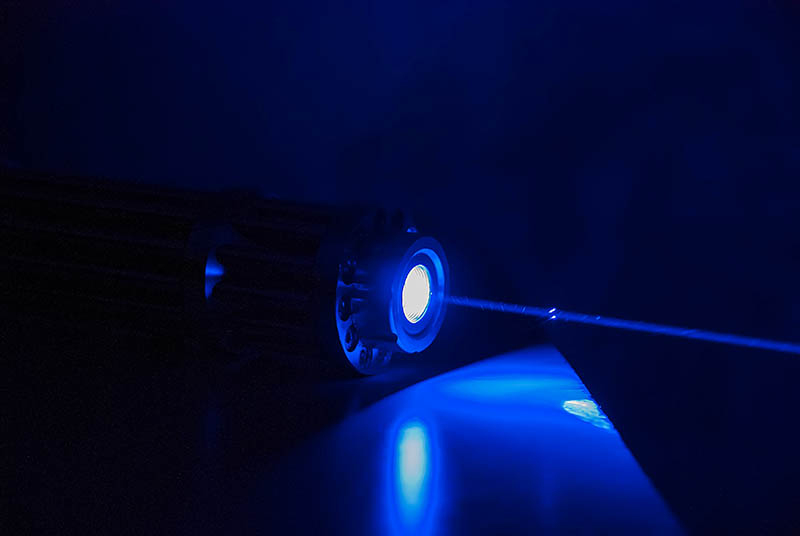Can a Laser Pointer Start a Fire? Safety, Facts, & FAQ
Last Updated on

Perhaps your only encounters with a laser pointer are seeing someone use it during a presentation or a person teasing a cat with one. Even a small one has a relatively strong light. You probably know that a magnifying glass can start a fire by concentrating sunlight onto an object.1 It might make you wonder if you can do the same thing with a laser pointer.
The short answer is yes, but you might not be able to try it out for yourself.

Laser Pointer Description
The term “laser” isn’t the name for the device but an acronym that describes its use. It means “light amplification by stimulated emission of radiation.” Hughes Aircraft manufactured the first one in 1960.2 Laser pointers offer a ready source of portable light using a lasing medium, an energy source, and a resonator.
The energy source provides the juice for the medium, creating the beam. The resonator concentrates the light. The ones you may have seen use DC power from batteries. Optics, a circuit board, and a laser diode are standard components of the ones you can buy for various uses.

Uses
The most common use for consumer products is a laser pointer for that purpose, whether it’s explaining a slide in a presentation or spotting an object in dim light. Hunters use modified versions to locate the game. They also have applications in chemistry, physics, and medicine. For example, veterinarians use this technology for surgeries, like declawing.
You’re probably most familiar with lasers in entertainment for concerts and shows. They’re also essential for firearms and military applications. Laser pointers are also valuable as a survival tool to signal for help if you get injured or lost outdoors.
Visible Light Spectrum
The light emitted from a laser pointer can be visible or invisible. It may also vary during the day or night. The visible light spectrum includes wavelengths between 380 to 740 nanometers. Different values emit varying colors. For example, you’ll see red with devices with 638 and 650 nanometers. Green ones are usually 532 nanometers.

FDA Classes of Laser Pointers
Radiation in the acronym is a clue about the use of laser pointers and explains why the FDA stepped into the sale of these devices. Their power is expressed in milliwatts (mW). The agency¹ categorizes laser pointers into six classes:
- Class I: laser printers and other consumer products
- Class IIa: Barcode scanners
- Class IIb: Barcode scanners
- Class IIIa: Laser pointers
- Class IIIb: Professional applications
- Class IV: Professional applications
You’ll also find products classified under the IEC 60825-1 standard from the International Electrotechnical Commission (IEC). It provides more specific safety information with warning labels to inform buyers about their risks, particularly regarding viewing and injury potential.
- Class 1: Very low risk
- Class 1M: Unsafe with optical aids
- Class 2: Generally safe with visible-light lasers
- Class 2M: Potentially hazardous with optical instruments
- Class 3R: Potentially hazardous but a lower risk for wavelengths between 400 and 700 nanometers with a 5 mW power limit
- Class 3B: Hazardous with direct beam viewing
- Class 4: Hazardous with risks of fire and severe skin injuries

Safety of Laser Pointers
The various classes reveal that lasers can cause fires but only with certain classes, hence, the classification and restricted use. The FDA prohibits “Class IIIb lasers sold or promoted for pointing or amusement purposes.”
The main risks associated with laser pointers are temporary/permanent eye injuries, burns, and other safety hazards. That brings us to our next point, the legality of these devices.

The Legality of Laser Pointers
One of the main hazards with laser pointers is distracting the object of the beam. It could involve trying to sway a sports event or something more serious, such as diverting a pilot’s attention. The latter is against federal law. Unfortunately, it occurs far too often, despite this legal classification. The Federal Aviation Administration (FAA) reported 9,723 incidents in 2021, over a 40% increase from 2020.

Summing Up
Laser pointers are a diverse group of products. They offer consumer and professional benefits in a broad range of industries, from education to entertainment to medicine. However, risks underscore the technology’s value. Serious injuries remain high on the list. Yet, fire hazards are also on the radar. That’s because laser points can indeed start fires.
Featured Image Credit: Cucu Andrei Adrian, Shutterstock
About the Author Chris Dinesen Rogers
Chris has been writing since 2009 on a variety of topics. Her motto with all of her writing is “science-based writing nurtured by education and critical thinking.” Chris specializes in science topics and has a special love for health and environmental topics, and animals of all shapes and sizes.
Related Articles:
How to Clean a Refractor Telescope: Step-by-Step Guide
How to Clean a Telescope Eyepiece: Step-by-Step Guide
How to Clean a Rifle Scope: 8 Expert Tips
Monocular vs Telescope: Differences Explained (With Pictures)
What Is a Monocular Used For? 8 Common Functions
How to Clean a Telescope Mirror: 8 Expert Tips
Brightfield vs Phase Contrast Microscopy: The Differences Explained
SkyCamHD Drone Review: Pros, Cons, FAQ, & Verdict
